faux stone blocking
Painted faux stone blocking is a form of specialist decoration in which the decorative artist represents various types of dressed limestone by means of a paint effect.
faux stone blocking images
faux stone blocking in use
The ashlar stone blocking paint effect in common with the real material creates a sense of warmth, solidity and grandeur and when using cooler tones a certain degree of formality.
The technique can dramatically enhance the architectural space and subtly suggest the proportions of good architecture.
As a device employed by the specialist decorator faux stone paint effects are ideally suited to balancing the proportions of a space, adding texture, movement, colour and discreet interest to walls and other surfaces. Skillfully done the effect can be unobtrusive and subtle or stronger and bolder depending upon the dictates of the commission.
faux stone paint effects in practice
The finish is ideally suited for use in hallways, corridors, entrances, stairways and any transitional areas. Generally faux stone work has a fairly neutral quality and the stone paint effect can form an ideal transition between different decorative areas. This neutrality provides an ideal background for the display of prints, paintings and sculpture. The subtle gradations of colour and texture that occur in the natural material, from almost white and cool greys through warm to muted yellows and even pink hues can encompass many briefs.
A stone paint effect used with sensibility can be effective on fibrous plaster work, especially columns to give them a lift away from the deadening effects of flat paint. A good decorative artist will balance the needs of individual elements with the overall requirements of the scheme.
Faux stone blocking can also form an ideal transitional element in a mural, leading the eye from the real space into the fictive area.
Painted ashlar stone blocking as this finish is sometimes referred to, can be executed entirely with paint or with paint worked over a lightly textured base coat.
Faux stone blocking the historical context
The labour intensive and costly use of the real material has resulted in stone paint effects being used for the most part since the nineteenth century. On exterior settings ashlar stone courses are suggested by incised lines, and in better work with fake mitred joints being incised in lime mortars, stuccoes and cement renders.
In interiors the ashlar stone block paint effect is usually used, and can be seen for example in extensive use in lobbies and staircases of many Parisian buildings.
Aesthetic antecedents lie in the work of Italian renaissance architects like Palladio for whom 'stoneiness' was something of a virtue, allowing as it does the essential principle of classical beauty, harmony of proportion, to shine forth. Sometimes this was achieved with stone blocking and sometime with just flat stucco. Palladio influenced Inigo Jones and thereby Colen Cambell, Lord Burlinton and William Kent, giving us the Palladian style. Palladianism (and in some respects the Neoclassical) are ideally served by a monochromatic tonal palette, and stony colours were the required treatments for halls, passages and stairways. These earth pigmented colours find concordance with the style of Palladio and the subliminal reminder of the pull of the earth. Robert Adam was just 20 when Kent died and the Neoclassical embraced the wonders of the Ancient Roman world, often in the form of romantic stone ruins. Stone with its associations of continuity, history and stability became romantically resonant in a period of rapid change.


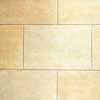 Faux stone blocking paint effect joints
Faux stone blocking paint effect joints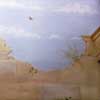 Faux stone paint effect trompe l'oeil
Faux stone paint effect trompe l'oeil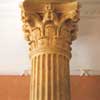 Faux stone paint effect to column
Faux stone paint effect to column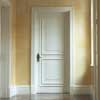 Stone blocking paint effect in entrance hall
Stone blocking paint effect in entrance hall Painted faux stone paint effect
Painted faux stone paint effect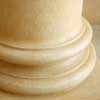 Textured Stone paint effect
Textured Stone paint effect 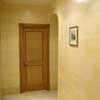 Ashlar stone blocking paint effect hallway
Ashlar stone blocking paint effect hallway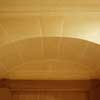 Faux stone paint effect keystone
Faux stone paint effect keystone